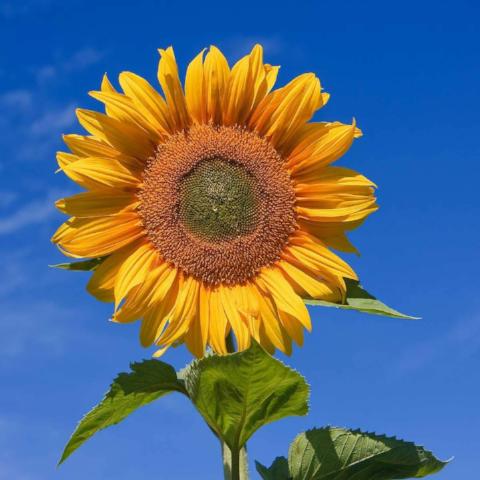A couple of weeks ago I wrote to you about some of my favorite flowers that we grow here on the farm. I realized I had not included one of my all time favorite flowers in that bunch. It seems only fitting as we have had a bit of a last gasp of wintery weather here in Oregon that my mind was brought to a true garden beauty, the Sunflower. Even on the dreariest of days just thinking about Sunflowers brightens my day.
I like to think of Sunflowers as gateway plants, I think most people can recognize them regardless of their plant knowledge. Their bright motifs cover our clothes and dishes, they are readily available at markets, native to North America and are a culinary delight. When I was an urban dweller I used to toss sunflower seeds into brown lots in the city, a misguided attempt at phytoremediation. Phytoremediation is basically the use of plants to clean pollutants from the soil, and Sunflowers are one such plant. They have the potential to pull heavy metals and toxins from contaminated soils.
Sunflowers are also very easy to grow. You can direct seed them when the soils have warmed to at least 60 degrees. They do prefer warmer soil and air but are actually quite tolerant of the cold. I usually seed them around the time of our last frost and then succession plant every few weeks for blooms all summer long. Sunflowers will grow about as big as the space you give them. If you seed them close together the stalks and flowers will be smaller, plant them further apart and the stalks and flowers will grow large!! I leave the stalks of Sunflowers up in the garden all winter long as forage for birds. It's truly delightful in the winter to see so many birds enjoying what they have to offer.
Here are three Sunflowers to mention from our collection that highlight different attributes that make sunflowers so versatile and wonderful to have in your garden.

-
Black Dye Sunflower - It is all in the name here, this sunflower is a dye plant that was grown, selected and cared for by Hopi farmers in the high desert. The dye, made from the black hulls of the seeds is used to make a purplish gray hue. These plants grow up to 12’ tall and have one large flower head and many small branches with smaller flowers growing down the sides of the main stalk.

-
Mammoth Russian Sunflower - If you would like to grow Sunflowers for food or seed production this is the best choice. Mammoth Russian Sunflowers are an heirloom variety that grow up to 12’ tall and have one very large seed head. The bright golden flower produces plentiful white seeds with gray stripes. You can roast the seeds, hull them and grind the seeds for nut butter or if you are truly adventurous you can make sunflower oil!

-
Tiger Teddy Sunflower - This one makes the list because not only does it make an incredible cut flower it was also bred and selected here at Siskiyou Seeds by Don Tipping. It is a cross between bi-color Tiger’s Eye and Teddy Bear varieties and displays an incredible array of colors from gold, bronze to burgundy. This is a great choice for succession planting and for gardeners who enjoy cut flowers.
≈ by Taryn Hunter


Comments (0)